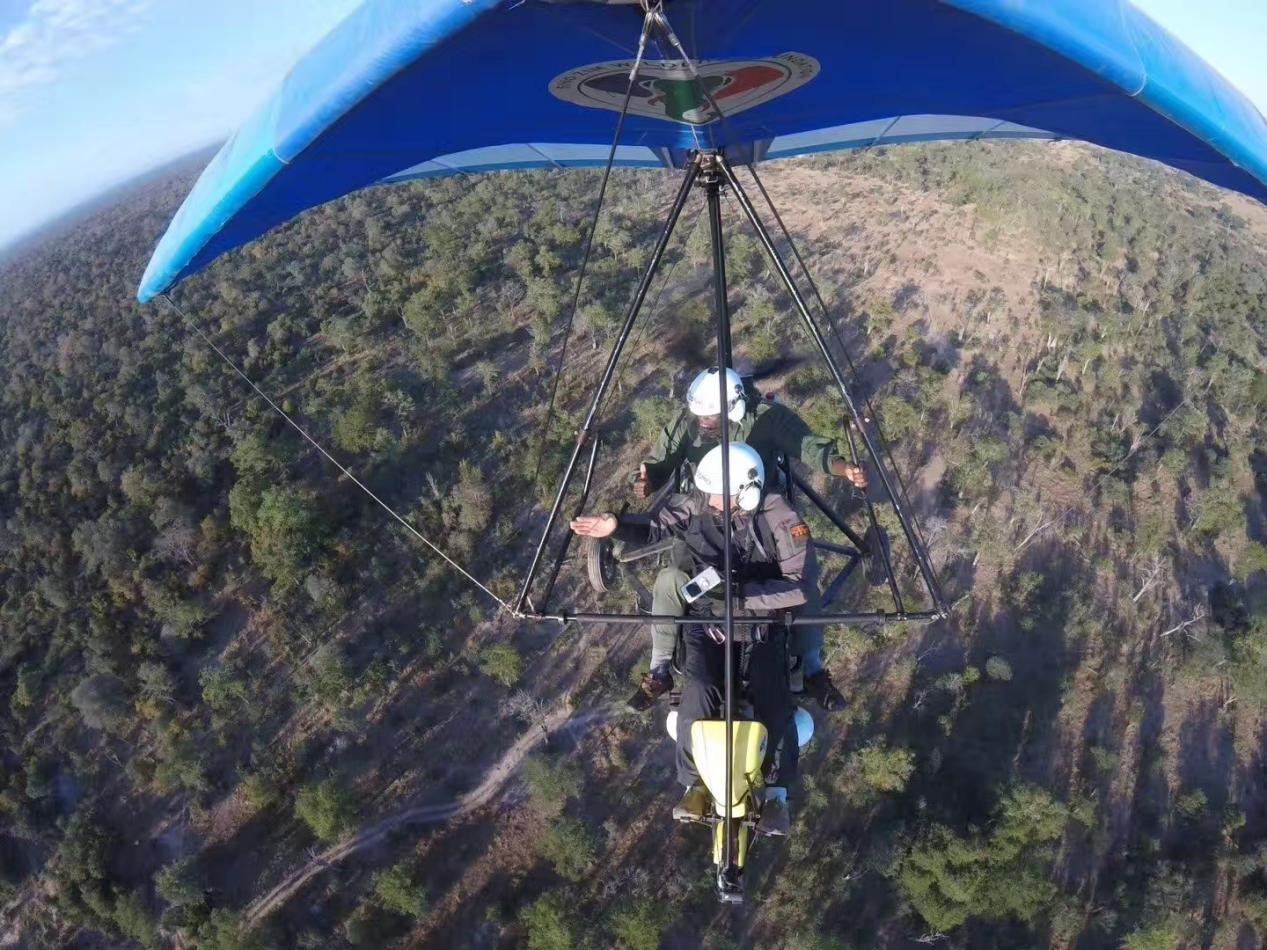Cultural and people-to-people exchanges between China and Africa bear rich fruits
In recent years, cultural and people-to-people exchanges between China and Africa, both with a long history and a splendid civilization, have played an essential role in promoting exchanges, mutual learning, and harmonious co-existence between the civilizations of the two sides, bringing the two peoples closer to each other and providing rich cultural nourishment for China-Africa cooperation.
Thanks to a China-funded project named “Access to Satellite TV for 10,000 African Villages (or “Wan Cun Tong” in Chinese),” residents of a remote village in Wakiso district, Uganda, which used to have a poor TV signal, can now watch digital satellite TV programs with clear pictures for free.

Children in a village located in a suburb of Bouake city, Cote d’Ivoire, watch Chinese martial arts, or Kung Fu, movie on television. The village got access to digital satellite television signal thanks to a project named “Access to Satellite TV for 10,000 African Villages (or “Wan Cun Tong” in Chinese)”, which was funded by Chinese government and undertaken by Chinese companies. (Photo/Courtesy of StarTimes)
Besides people’s homes, local clinics, primary schools, and other public areas have also been covered by digital satellite TV signals. While enriching villagers’ cultural life, the project undertaken by Chinese companies also provides technical support for schools in remote education.
So far, the project has been carried out in more than 20 African countries, under which digital TV sets have been installed in 10,000 villages.
In addition, China has also assisted with and implemented cooperation projects for radio and TV centers in Seychelles, Comoros, Tanzania, and Mauritius. Relevant projects have improved the capacity of local broadcasting systems and played important roles in local cultural communication.
Chinese people and African people share the aspiration of making their homelands beautiful places where people can live in harmony with nature. As a result, they have worked together to pursue green, low-carbon, circular and sustainable development and protect the lush mountains and lucid waters as well as living beings.
In Kenya’s Nairobi National Park, wild animals such as giraffes, antelopes, and rhinos are often seen foraging or strolling. At the same time, advanced trains pass the park along the Chinese-built Mombasa-Nairobi Standard Gauge Railway (SGR), which makes traveling easier for the locals.

Young people in Ghana learn high value-added Chinese techniques for weaving furniture with bamboo and rattan at a China-aided training program. (Photo/Website of China International Development Cooperation Agency)
Upholding the idea of harmonious coexistence between human and nature, a basic principle of sustainable development, Chinese constructors of the railway have, based on extensive investigations and research into the living habits and migration routes of local wild animals, built 14 wildlife crossings for large animals and 79 bridges along the route.
The clear height of all the wildlife crossings is above 6.5 meters so giraffes can pass without lowering heads.
The constructors of the Mombasa-Nairobi SGR have also paid great attention to protecting the vegetation of the Mombasa Mangrove Wetland Park. They have tried to ensure the normal growth of the mangroves through multiple measures, including building detours and installing pipe culverts in advance.
Covering an area of more than 2,000 square kilometers, the Mana Pools National Park and the Sapi and Chewore Safari Areas in Zimbabwe, which have been inscribed on the UNESCO World Heritage List as a single natural World Heritage site, are inhabited by various wild animals, including elephants, lions, leopards, hippos, and crocodiles. They were also one of the famous bushmeat hunting areas in Africa and used to be disturbed by armed poachers.

Chinese and Zimbabwean anti-poaching volunteers conduct an aerial patrol on a delta-wing powered hang glider at Mana Pools National Park in Zimbabwe. (Photo/Courtesy of Peaceland Foundation)
Since 2015, Peaceland Foundation, a Beijing-based non-profit organization, has sent six batches of Chinese anti-poaching volunteers to the World Heritage site. These volunteers have brought advanced devices with them, such as delta-wing powered hang gliders, rubber dinghies, and night-vision devices, and led local rangers in conducting aerial and water patrol with such devices, significantly improving the application of sci-tech in and the effectiveness of anti-poaching efforts of the locality.
Because of the joint efforts of relevant Chinese and African teams, poaching in the World Heritage site had almost been eradicated by 2019.
Next year, Chinese anti-poaching volunteers will go to Kilimanjaro region in Tanzania to carry out new tasks for animal protection and tackling climate change.
Photos
Related Stories
- China-Africa cooperation in new era
- China's COVID-19 vaccine aid to Africa to travel long distance, outpace virus: FM
- Africa says China's vaccine pledge timely
- China, Africa to renew ties with sincere friendship, equality
- China, Africa pledge to step up cooperation
- China, Africa pledge to strengthen cooperation on tackling climate change
Copyright © 2021 People's Daily Online. All Rights Reserved.










